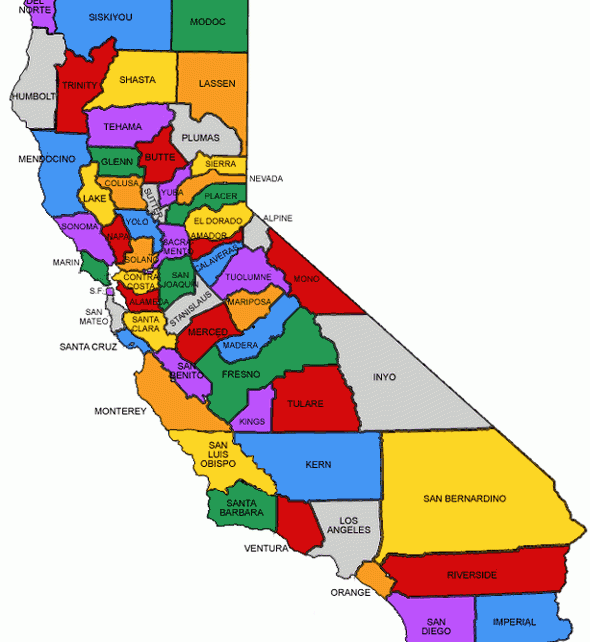CA Counties Count – Smallest to Largest, Plus Fun Facts
CA Counties Count – Smallest to Largest, Plus Fun Facts
Blog Article

Have you ever wondered what the exact county count in California is? You’d be surprised how many people ask the same question. From trivia nights to travel planning, the number 58 keeps popping up, yet that single digitonly tells half the story.
The Golden State’s 58 counties createa patchwork of contrasts: sun-drenched coastal hubs, pine-covered mountain regions, fertile Central Valley breadbaskets, and global entertainment capitals. Each county carries its own story, forged throughimmigration waves, cutting-edge innovation, and waves of cultural fusion.
Throughout this guide, we’ll explorehow the state’s county map froze at fifty-eight, the services counties deliver day-to-day, and which ones stand out for size, population, or sheer quirkiness. Ultimately, you’ll get more info have the numbers—and be ready to ace any quiz with confidence.
Origins of California’s 58 Counties
When California joined the Union in 1850, the map contained barely half the jurisdictions we know now. Rapid gold-rush immigration compelled legislators to carve out new counties. By the end of the 1870s, the count had ballooned to more than fifty counties, and by 1907 the last adjustments were ratified, setting in stone the now-famous tally of fifty-eight.
Assembly journals reveal that most new counties stemmed from three overlapping forces:
- Hundreds of rugged miles turned routine business into week-long trips.
- Revenue battles between miners and farmers sparked break-ups.
- Ethnic enclaves sought their own seats.
By 1920, the political map stabilised. Right now, every effort to create county #59 stalls, prompting analysts to call the era when new counties sprouted a finished chapter.
A County-by-County Tour of Terrains
Plot a route from rugged Del Norte on the Oregon line to the date groves of Coachella, and you’ll traverse dozens of ecosystems. Ocean-brushed jurisdictions benefit from Mediterranean precipitation, while great agricultural belts record triple-digit heat.
- Sierra jurisdictions such as El Dorado, Tuolumne, and Sierra receive winter snows.
- River-delta territories fight subsidence but export produce worldwide.
- Island counties like Ventura oversee ferry routes.
That geographic spread underpins why no two counties share identical economies. Climate, after all, shapes crops and careers.
What Counties Actually Do
Amid Sacramento’s delegated framework, municipalities handle zoning, but counties shoulder the bread-and-butter functions that make communities livable. Life’s paperwork trail—marriage licenses, tax rolls, voter registries—all sit at the recorder-assessor’s office.
County law-enforcement offices patrol vast rural stretches, while county benches hear civil suits. Public-health branches distribute food assistance. Tax-allocation showdowns spark long agenda nights.
Case Study: Tiny Alpine County
Los Angeles County alone employs 100 000+ workers, illustrating how elastic county governance proves. Uniformity would never work when land areas shift from 47 to 20 000 sq mi.
At day’s close, these 58 mini-capitols bridge Sacramento’s big laws and local reality. Grasping their portfolio helps residents demand accountability.
Where the People and Money Are
Home to over 39 M souls, but the headcount is far from evenly spread. LA County by itself hosts more than one resident in four. On the flip side, remote Alpine could fit its voters into a high-school gym.
- Top headcount: County of Los Angeles
- Fewest people: Alpine
- Widest landmass: San Bernardino County
- Compact footprint: City & County of SF
Fiscal bandwidth mirrors population spread. South Bay enclaves see venture cash flow in at record rates, while cotton-and-almond hubs battle mechanisation and drought cycles. These fiscal contrasts informs legislative redistricting every decade.
Tracking each superlative pays dividends: tax rates, job prospects, and lifestyle perks hinge on county lines.
An Epic 58-County Road Trip
Adventure-hungry drivers, setting foot in each CA county has become a badge. One ambitious loop sets out in sunny San Diego, rolls up the Pacific Coast Highway, swings through Santa Cruz, then zigzags across rice-field flats and orchard grids, before climbing into the Sierra Nevada for historic gold-rush hamlets.
Three-Day County Clusters
- Southern Swing – Mission trail coast; ten jurisdictions in three days.
- Valley Ribbon – Bakersfield up to the delta; eight hours of orchards.
- Shasta & Siskiyou Turn – evergreen corridors; hidden hot springs.
Cap off the circuit in the desert southeast, after two thousand kilometres of asphalt. By then, you can brag that you’ve lived the answer to the county-count question—because your copyright stamps prove it!
FAQ
Curious about California’s 58 counties? The following FAQ has you covered.
How many counties are in California?
State records confirm 58 counties—a number that hasn’t changed since 1907. Regardless of the source—be it Sacramento archives or federal census data: 58.
Which county has the largest population in California?
The population heavyweight is Los Angeles County, housing roughly one in four Californians. Its size stems from historic migration waves, a diverse economy, and global cultural pull.
Least populous California county?
The crown for smallest population goes to Alpine County, with fewer than 1 200 inhabitants. High-elevation geography keeps growth modest, preserving a frontier feel.
Largest county by land size?
San Bernardino County spans the most ground covering a footprint larger than nine U.S. states. You can drive for hours without leaving its borders—crossing ski slopes, dunes, and bedroom communities.
Why does California have exactly 58 counties?
Gold-rush politics, rail expansion, and farmland disputes carved today’s boundaries, ending when Imperial County formed in 1907. Every modern effort to create a new county stalls in committee or dies at the ballot box.
Can new counties still be created in California?
Technically, the California Constitution leaves the door open, but the hurdles are steep. Petition drives, feasibility studies, dual-county referenda, and a two-thirds vote in Sacramento make secession rare. Hence, California has remained at 58 for generations.
What services do California counties provide to residents?
Behind the scenes, counties keep daily life functioning: property assessments, public hospitals, welfare programs, and jails. Without county infrastructure, everything from jury duty to restaurant inspections would grind to a halt.
Report this page